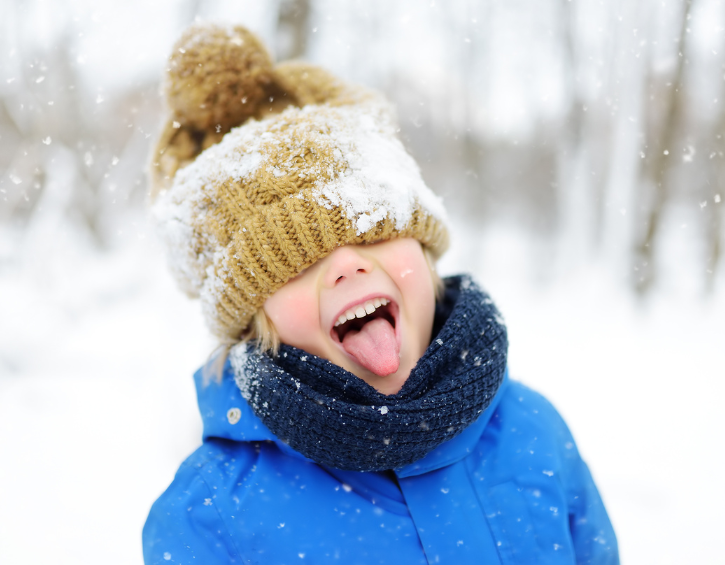Keeping Your Child Warm and Ready for Outdoor Fun
Getting children outside, especially during winter, is crucial for their development and well-being. Studies have shown that outdoor activities offer numerous benefits, even when the weather turns cold. The winter environment provides many new learning opportunities for children of all ages.
Preparing your child for their day outdoors starts with providing the proper clothing and accessories to keep them warm and happy.
In this blog post, we’ll explore essential tips for dressing your child for winter weather, ensuring they remain comfortable and protected.
The Importance of Dressing Appropriately for Winter
Winter can be a magical time for children, filled with new experiences and adventures. However, it’s important to dress them appropriately to ensure their safety and comfort. Proper winter clothing prevents cold-related illnesses and promotes a positive outdoor experience. Each clothing layer plays a significant role in keeping your child warm and dry, from base layers to outer protective gear.
Meet Zayaan: A Winter-Ready Toddler
Meet Zayaan, a busy 20-month-old who loves being outside. Zayaan is a perfect example of how to dress a child for winter weather. Let’s look at the layers Zayaan wears to stay warm and enjoy his outdoor adventures.
The Base Layer: Keeping Dry and Comfortable
The base layer is crucial for wicking sweat away from the skin and keeping your child dry. Zayaan starts his day with a base layer of long underwear, pants, and a long-sleeve shirt. He also wears his favorite dinosaur inner socks. To manage moisture effectively, the base layer should fit snugly against the skin and be made from wool or synthetic materials, not cotton.
Long underwear, thin tights, or leggings paired with a long-sleeve undershirt work best for the base layer. Additionally, tall, thin socks can absorb moisture from the feet, ensuring they stay dry and comfortable throughout the day.
The Insulating Layer: Adding Warmth
Once the base layer is in place, adding the insulating layer is time. This layer provides warmth and should be made of fleece, wool, or synthetic materials. Zayaan adds a fleece sweater and jogging pants to his base layer. He wears tall wool socks to keep his feet warm, which are perfect for colder days.
The Outer Protective Layer: Shielding from the Elements
The outer protective layer is essential for shielding your child from wind, rain, and snow. This layer typically consists of waterproof snow pants and a snow jacket. For added protection, choose a one-piece snowsuit or snow pants with a bib to avoid cold air gaps at the back and waist.
Hands can be tricky to keep warm, especially for younger children. Having a variety of options works best for different types of play. Gloves are great for active play, while thin mittens with a thicker waterproof pair provide options for colder days. Ensure your child has a few mittens to keep their hands warm and dry.
A tube scarf is an excellent accessory to cover the neck and chin, preventing cold air from entering the jacket. Tube scarves are ideal for young, active children. To complete the ensemble, a well-fitting hat that covers the full ears and fastens under the chin ensures a secure fit and keeps your child warm.
Additional Tips for Outdoor Winter Adventures
If your child attends a toddler or preschool program, many centers provide green waterproof suits to ensure a comfortable outdoor experience in wet, cold, and muddy environments. These suits can be worn over snowsuits when needed, offering an extra layer of protection.
The final step in preparing your child for outdoor winter fun is putting on warm and waterproof winter boots. Ensure the snow pants come right over the boots to prevent snow from entering.
Conclusion: Embrace the Winter Wonderland
Proper winter clothing is essential to keeping your child healthy and ensuring an amazing outdoor learning experience. By following these tips and dressing your child in appropriate layers, you can help them embrace the winter wonderland safely and comfortably.

